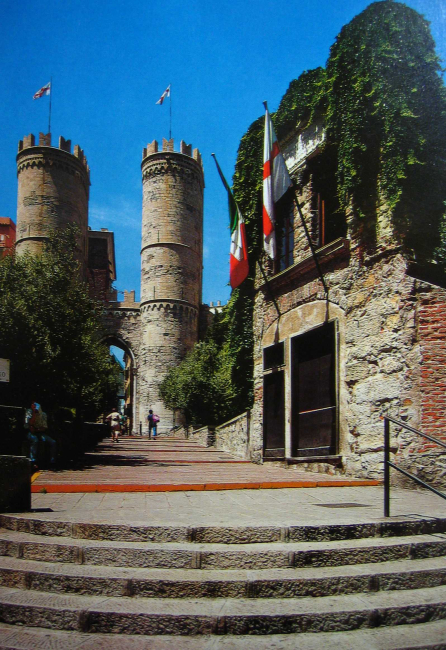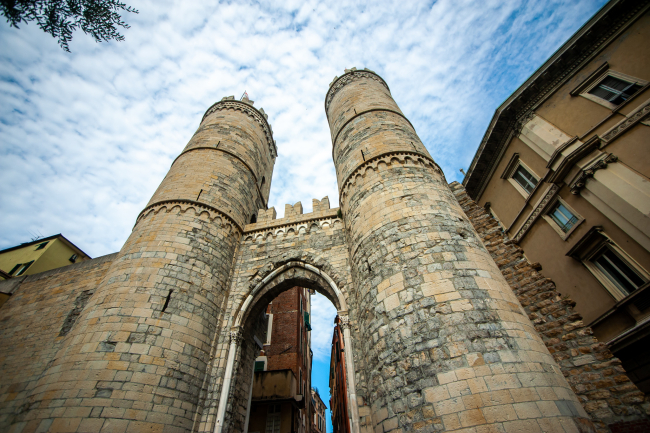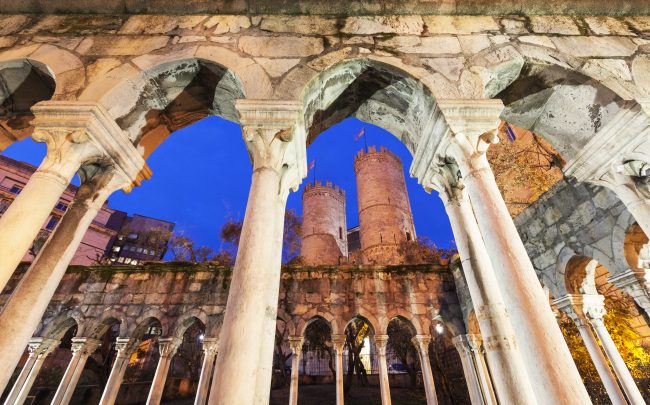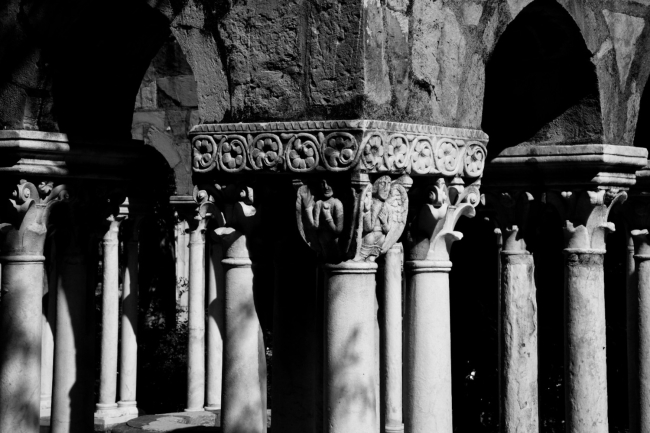Columbus' House, Porta Soprana City Gate and St. Andrew Cloister
Columbus' House
Without him it would, literally, be a whole different “story” because, as everyone knows, Christopher Columbus was responsible for the “discovery” of the Americas on October 12, 1492, a date widely taken as the beginning of the Modern Age.
Perhaps the most illustrious son of Genoa, Columbus lived part of his life, in a period of time between 1455 and 1470, in the building known as Casa di Colombo, located in the heart of the city, near Piazza De Ferrari and a stone's throw from Porta Soprana. The building has two floors: the ground floor was used as a workshop by his father, Domenico Columbus, who dealt in wool weaving and trade; the home of the family was upstairs. It is probably an 18th century reconstruction of the original medieval building, where the discoverer of the Americas spent his youth. The house was likely destroyed during the bombing by the French fleet of King Louis XIV that hit Genoa in 1684. According to Genoese historian Marcello Staglieno, who is credited with the discovery of the home of Columbus, at the time of the navigator the building had two or perhaps three floors and was restored on the basis of the original remains. The archival documents found by Genoese historians suggest that Domenico Columbus, father of the great navigator, moved with his family in the Vico Dritto Ponticello in 1455 when Columbus was only four years old. The ground floor of the house was used as a workshop; the front door was on the left of the façade. A wooden truss ceiling separates it from the upper floor, probably as in the original structure.
During a restoration carried out in 2001, important historical-archaeological finds were made: traces of masonry of probable Roman origin, an underground medieval channel for the disposal of water.
Monumental complex
St. Andrew Cloister
The St. Andrew Cloister was dismantled in 1905, at the conclusion of the demolition of the monastery of St. Andrew Della Porta where it had been built in the 12th century. It was the only architectural structure to be saved during the demolition. The monastery was located a short distance from the current location of the cloister, next to the Porta Soprana. It was accessed through a small lane starting from the gate. The decision to demolish the monastery was part of a plan to renovate the entire urban area. The whole neighbourhood of St. Andrew was thus destroyed, which had originated in the Middle Ages around the monastery and was still densely populated and urbanised in the early 20th century.
Porta Soprana
The Porta Soprana was the gateway to the city for whoever arrived in Genoa from the east. It dominated the hill of St. Andrew, which takes its name from the monastery demolished in the 19th century to build the Via Dante and the building that currently houses the Bank of Italy. The two towers framing the access to the Porta Soprana still bear two gravestones in Latin commemorating the glories of Genoa: one of these, on the left side of the entrance, addressing the one who is about to enter, says among other things: "I am guarded by soldiers, surrounded by beautiful walls and with my value, I cast away the darts of the enemies. If you bring peace, you may approach this gate; if you seek war, you shall return sad and beaten".
For information on rates and timetables, please refer to the site of the structure.
Useful info







